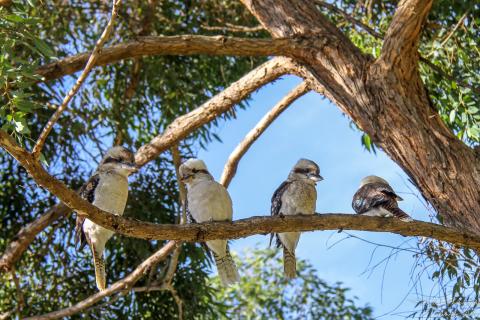Just off the Hawkesbury River, at Lower Portland, lies Blundell's Swamp, a rare surviving piece of a once-thriving network of upland lakes, coastal floodplains, and coastal wetlands.
Wetlands across the Hawkesbury-Nepean region are under severe pressure. Habitat disturbance from draining, grazing, feral animals, and road construction has left most sites destroyed or in very poor condition. In this challenging landscape, Blundell's Swamp stands out as a rare success thanks to half a century of quiet, determined care.
Landholder Rodney Molesworth and a dedicated group of conservationists have been protecting Blundell's Swamp since the 1970s and the group set out with a single purpose: to safeguard the land. In 1980, it created a co-operative to own and manage the property, ensuring it could never be sold for profit and its future would always put environmental values first.

"We've only ever had conservation aims and have never used the land for any other purpose," Rodney said.
Designated a wildlife refuge more than 40 years ago, Blundell's Swamp has become a vital sanctuary amid the pressures of urban expansion. It's not the largest wetland remaining in the Hawkesbury network, but surrounded by untouched bushland, and free from agricultural or residential interference, it is among the best preserved.
Devastating floods in 2021 and 2022 damaged the wetland's delicate balance, bringing invasive plants like waterlilies and introducing non-native carp to cloud the previously clear waters. Meanwhile, perennial issues such as feral goats, trespassers, and fires require ongoing effort.
Those ongoing challenges, plus local residential development and an ageing membership, led the group to look for more support.
In 2023 it signed a conservation agreement with the NSW Biodiversity Conservation Trust, which Rodney said has provided what they were looking for, from access to expert advice and weed control grants to stronger links with government and non-government networks.
"People worry a conservation agreement will limit what they can do on their land, but in our case, it just supported what we were already doing and offered real help with the things that are hard to tackle alone," he said.
Ecologist Mike Lawrie, who has worked closely with Blundell's Swamp, said it's a standout example of what's possible when private landholders commit to conservation over the long term.
"What the co-op has achieved at Blundell's is remarkable," Mike said.
"In a region where almost all natural wetlands have been drained or degraded, this is one of the few places left where you can still see a wetland functioning close to its natural state. Without their long-term protection and minimal interference, this ecosystem would have been lost decades ago."
There's no doubt Blundell's Swamp is a haven for wildlife. Hundreds of flowering melaleucas attract honeyeaters and finches. Raptors, including wedge-tailed eagles, sea eagles, goshawks, and whistling kites, are frequent visitors. The wetland offers vital refuge for migratory birds following the coastal flyway, and for native frogs, turtles, and other aquatic life that struggle to find clean, undisturbed habitats elsewhere.
Rodney believes the group's greatest contribution has been just to step back and let nature lead.
"Aside from a few hectares kept cleared for access, we've left the land to itself, and nature has done the rest," he said.
Looking ahead, Rodney is excited about programs like Land Libraries, which compile citizen science data to strengthen conservation efforts.
"It's wonderful to have an easy way to authenticate and share what we're seeing on the ground with government, businesses, and researchers," he said.
Mike agrees, saying authenticating and centralising data is critical for building the case to protect remaining natural areas.
"Blundell's Swamp isn't just a local treasure it's a piece of local natural heritage. Documenting its value and sharing that widely helps ensure it gets the recognition and support it deserves," Mike said.
After five decades of conservation work, Rodney has a simple message.
"Look carefully at what you actually do with your land. I think you'll find that most of it has a future that's entirely compatible with conservation and the rewards are greater than you can imagine."
See the amazing photos from Blundell's Swamp at Land Libraries or visit Blundell's Swamp Wildlife Refuge.
(Photos by Beverly Baker BDI Photography)